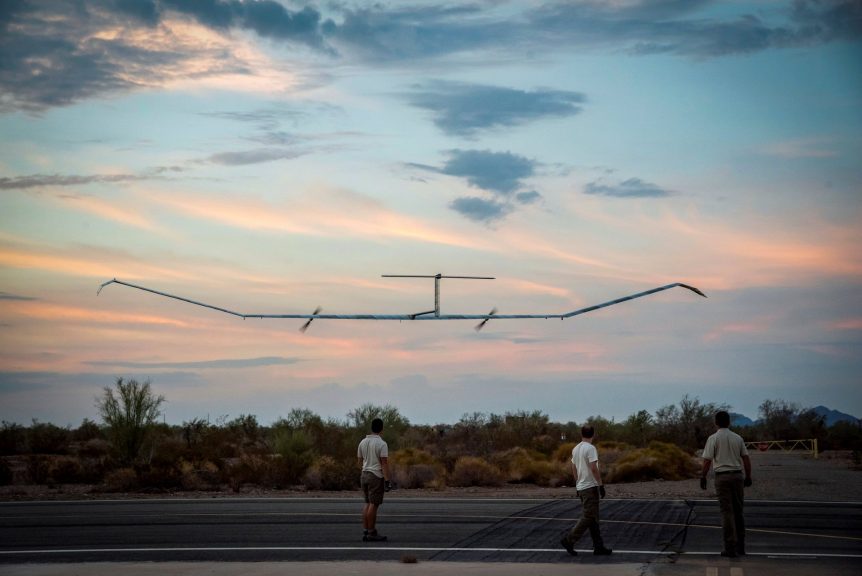Sunnyvale, California-based Amprius kept a low profile for several years, despite its founder, Yi Cui, being a leading light in battery development. Their December 4th press release, though, finds the company to be in a more open mood, their advanced lithium-ion cells with 100-percent silicon anodes having flown Airbus’ Zephyr High Altitude Pseudo Satellite (HAPS) for over 25 days, “setting a new endurance and altitude record for stratospheric flight.” This milestone represents a great leap forward since Alan Cocconi flew his So Long solar-powered model for 48 hours, the first of many projects of which he would be an integral part, and the first solar airplane to fly overnight. He worked on the General Motors EV1 and Eric Raymond’s Sunseeker 1 – just a small part of the automobiles and aircraft which he would help create or refine. Your editor first saw Cui at an early electric aircraft symposium nine years ago. Cui discussed the benefits of developing silicon anodes …
81.5-Hour Solar Flight – Best in Class
Following Andre’ Borschberg’s record-breaking endurance and distance flight in Solar Impulse last month, the accomplishment of a group of Swiss students and their planned trans-Atlantic, solar-powered autonomous flight are equally worthy of consideration. With a much smaller budget than Solar Impulse, the students are planning a 5,000 kilometer (3,100 mile) flight from Bell Island, Canada to Lisbon, Portugal, a seven-day test of self-guided navigation and autonomous airmanship. Recent achievements by the team suggest that success will come from good design and careful planning. Last month, their AtlantikSolar 2 Unmanned Aerial Vehicle made its first 24-hour flight. (The team generously acknowledges American Alan Cocconi’s 48-hour, solar-powered flight with his 13-kilogram (28.6 pound) So Long in 2005.) Only two weeks later, the ETH (Swiss Federal Institute of Technology) Zurich students from the Autonomous Systems Lab managed an 81.5 hour flight that sent their 5.6 meter (18.6 feet) wingspan, 6.8 kilogram (15 pound) UAV 2,316 kilometers (1,436 miles). This broke the world record …
Solar Impulse Overnighter: 26 Hours Nine Minutes
Andre’ Borschberg, CEO and co-founder of the Solar Impulse project, landed this morning at 9:00 a.m. (local tme) in Payerne, Switzerland, having completed the first-ever night flight on battery energy stored during the previous day through the craft’s solar cells. Taking off at 6:51 a.m. July 7, Borschberg flew the 64-meter span, four-motor airplane in large patterns around the area, gaining altitude to a height of 8,564 meters (27,404 feet) above sea level and charging the batteries – all while running the motors at climb power. As night fell, he glided to preserve the stored power, ran the motors as needed to maintain altitude, and landed with a small reserve. This successful demonstration of being able to run the motors on solar power while still charging the batteries means the project can go on to its next stages, spelled out in this morning’s press release “The success of this first night flight by a solar-powered plane is crucial for the further …
Solar Flight at Night
The Solar Impulse prototype, HB-SIA, will be making its first night flights within the next month, according to a June 15, 2010 press release from the project team. With eight successful flights to its credit, the airplane will attempt two critical missions according to the release: “the first night flight ever by a solar aircraft “the first ever complete cycle flight to validate the possibility of long-duration flights without any fuel” “’To fly day and night with a solar aircraft is a human and technological challenge that has never been met so far, and an essential stage of the project’, says André Borschberg, CEO and co-founder of Solar Impulse. ‘Demonstrating that we can fly a whole day and night will then permit us to fly several successive cycles and come close to perpetual flight.’ “’The big question will be whether the pilot will be able to save sufficient energy as to fly right through the night. These night flights in …
Isn’t It Ionic?
Only a few months after the first heavier-than-air hydrogen-fueled crossing of the English Channel (See Man of La Manche, October 29), the Naval Research Laboratory flew its hydrogen fuel cell-powered Ion Tiger for an endurance record of 26 hours and one minute. The flight took place on November 16th through November 17th. The Navy press release claims, “Fuel cells create an electrical current when they convert hydrogen and oxygen into water and heat. The 550 Watt (0.75 horsepower) fuel cell onboard the Ion Tiger has about four times the efficiency of a comparable internal combustion engine and the system provides seven times the energy in the equivalent weight of batteries. The Ion Tiger weighs approximately 37 pounds and carries a 4- to 5-pound payload.” This endurance record follows an October 9th and 10th unofficial record of 23 hours and 17 minutes. The NRL hopes to increase the power output of the fuel cell to 1.5 kW, or about 2 horsepower, …

